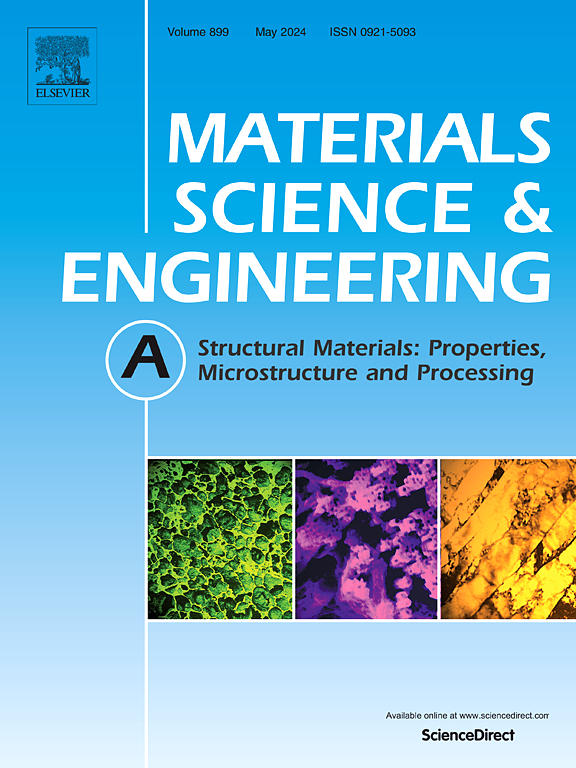中锰钢的连续退火:机械性能对时间-温度热处理参数微小变化的敏感性
IF 6.1
2区 材料科学
Q1 MATERIALS SCIENCE, MULTIDISCIPLINARY
引用次数: 0
摘要
对中锰钢板临界间退火的研究多集中在间歇退火条件上,这是一个耗时多、经济技术效率低的过程。关于这些钢的连续退火的文献是有限的,这对它们的大规模工业生产至关重要,主要集中在退火温度或时间等过程的具体方面。下面的研究全面地讨论了加铝中锰钢连续退火的所有最重要的参数。对有利于保持奥氏体稳定性的加热(3°C/s)和冷却(1°C/s)条件进行了广泛的浸泡温度(700-760°C)和时间(2-120 s)分析,并对工业生产可行。考察了这些条件对残余奥氏体化学稳定性和机械稳定性的影响。由此产生的组织与热处理钢的力学性能相关。这可以确定中锰钢连续退火的工艺窗口。此外,在所有应用的热循环中,残余奥氏体的分数和稳定性在18%到34%之间,与钢的机械性能变化有关。这证实了仅保留高比例的奥氏体不足以获得高塑性。关键因素是奥氏体相的最佳机械稳定性,与含有41% RA的样品相比,在含有32% RA的样品中观察到的塑性明显更好。此外,随着残余奥氏体稳定性的降低,整体塑性和局部塑性之间的关系发生了显著变化。本文章由计算机程序翻译,如有差异,请以英文原文为准。
Continuous annealing of medium-Mn steels: Sensitivity of mechanical performance to minor changes in time-temperature heat treatment parameters
Studies on the intercritical annealing of medium-Mn steel sheets mostly focus on batch annealing conditions, a multi-hour process with low economic and technological efficiency. The literature on continuous annealing of these steels, which is crucial for their large-scale industrial production, is limited and primarily focuses on specific aspects of the process like annealing temperature or time. The following study comprehensively addresses all of the most important parameters of continuous annealing of Al-added medium-Mn steels. A broad range of soaking temperatures (700–760 °C) and times (2–120 s) was analyzed for heating (3 °C/s) and cooling (1 °C/s) conditions that are favorable for retaining austenite stability and feasible for industrial production. The effects of these conditions on the chemical and mechanical stability of retained austenite were examined. The resulting microstructures were correlated with the mechanical properties of the heat-treated steel. This allowed to determine the technological window for continuous annealing of medium-Mn steels. Moreover, the fractions and stability of retained austenite in a range from 18 to 34 %, for all applied thermal cycles, were linked to changes in the steel's mechanical properties. This confirmed that a high fraction of retained austenite alone is insufficient for achieving high plasticity. The key factor is the optimal mechanical stability of the austenite phase, as evidenced by the significantly better plasticity observed in a sample with 32 % RA compared to one containing 41 % RA. Furthermore, the relationship between global and local plasticity changes significantly as the stability of retained austenite decreases.
求助全文
通过发布文献求助,成功后即可免费获取论文全文。
去求助
来源期刊

Materials Science and Engineering: A
工程技术-材料科学:综合
CiteScore
11.50
自引率
15.60%
发文量
1811
审稿时长
31 days
期刊介绍:
Materials Science and Engineering A provides an international medium for the publication of theoretical and experimental studies related to the load-bearing capacity of materials as influenced by their basic properties, processing history, microstructure and operating environment. Appropriate submissions to Materials Science and Engineering A should include scientific and/or engineering factors which affect the microstructure - strength relationships of materials and report the changes to mechanical behavior.
 求助内容:
求助内容: 应助结果提醒方式:
应助结果提醒方式:


